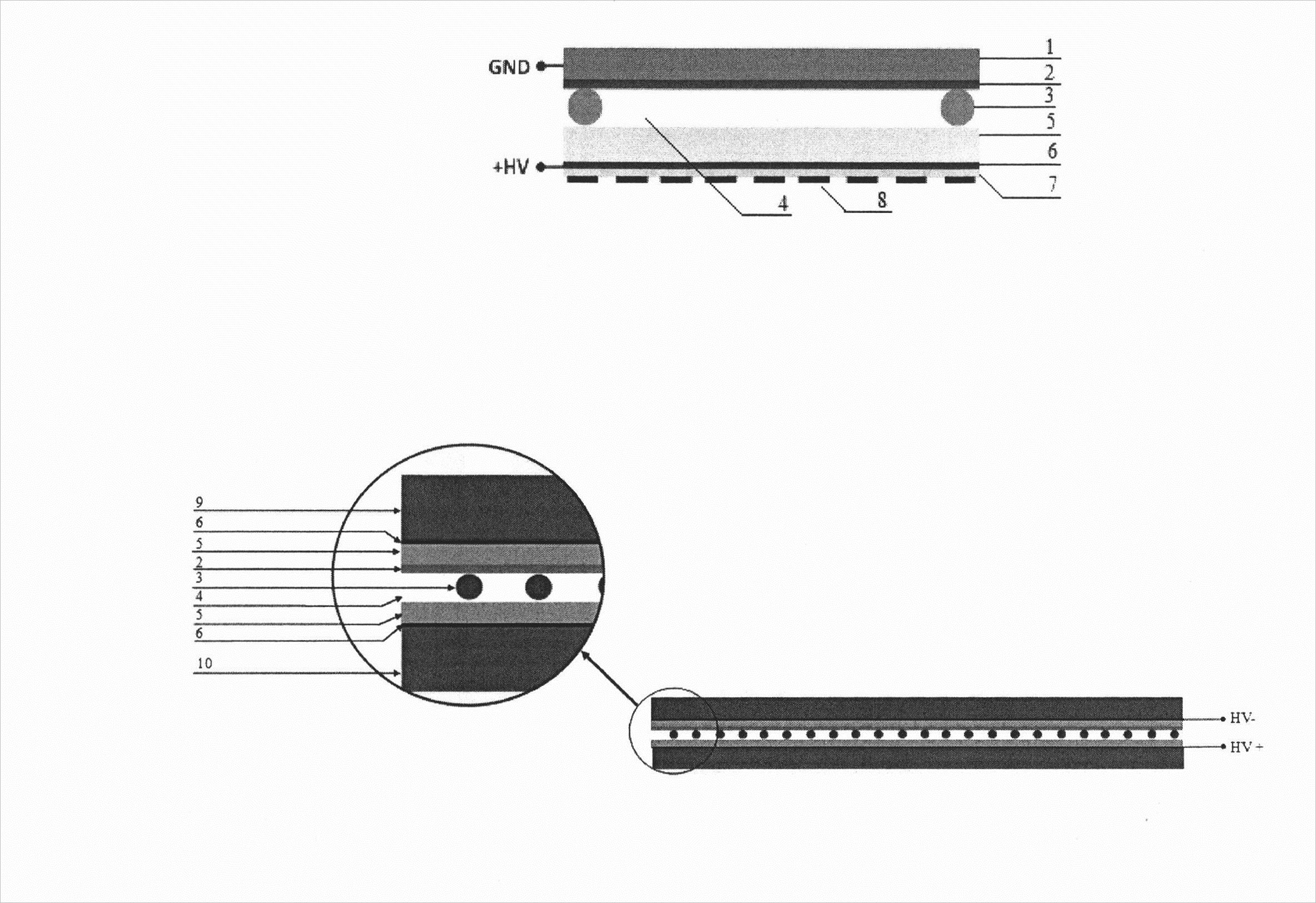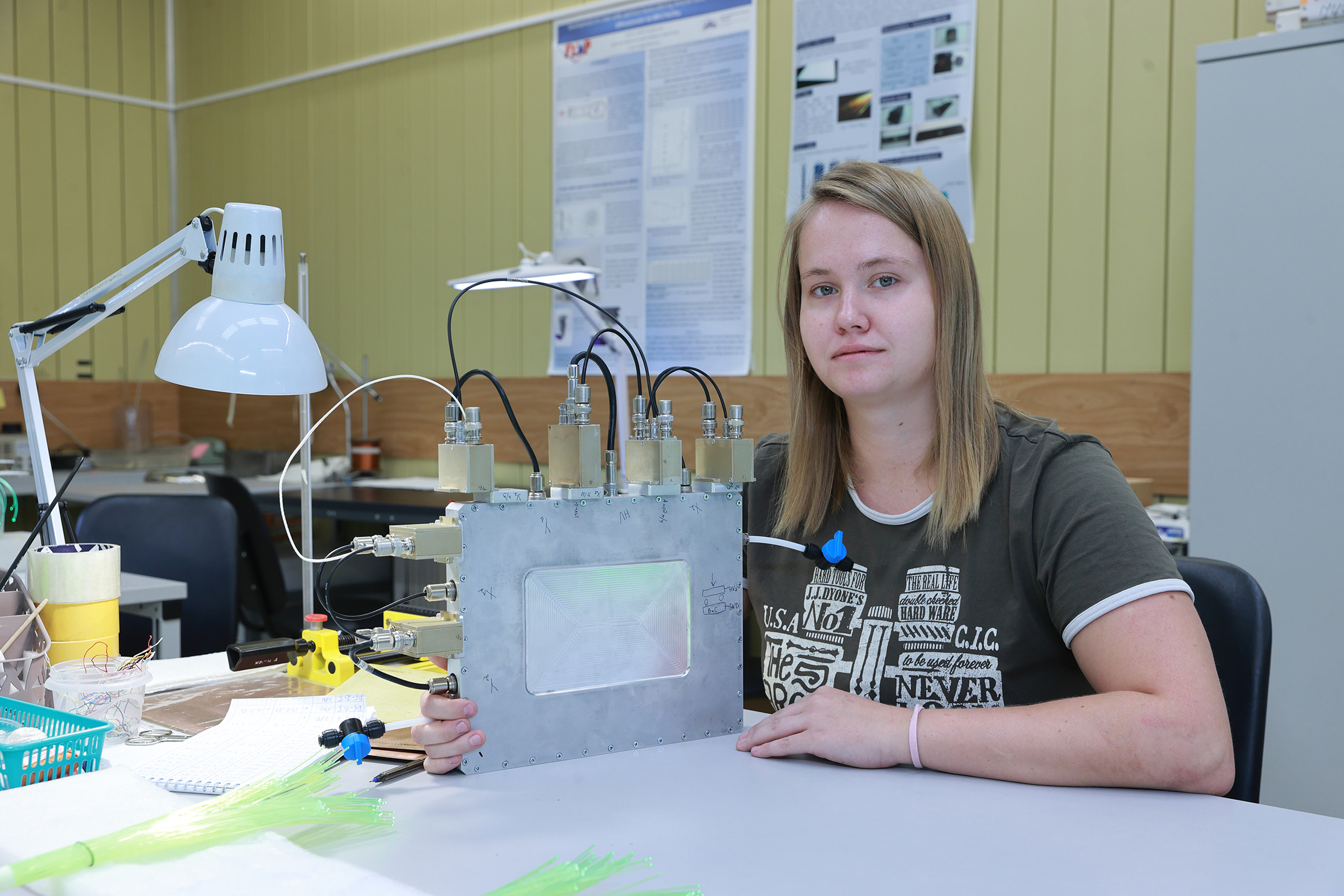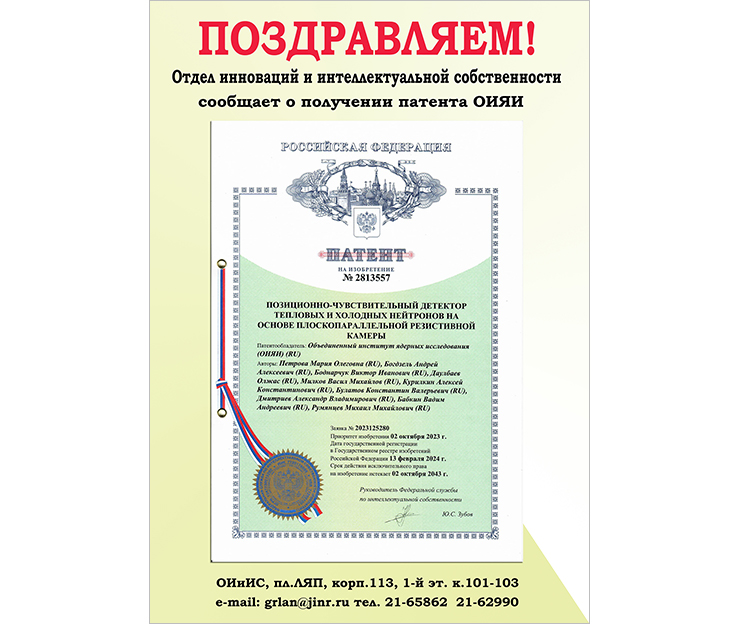FLNP JINR develops position-sensitive slow neutron detector
News, 03 April 2024
Scientists from the Frank Laboratory of Neutron Physics of the Joint Institute for Nuclear Research have developed a detector of thermal and cold neutrons on the basis of a solid-state converter. The new device will have increased radiation resistance compared to analogues and a longer service life in a neutron beam. The detector will make it possible to monitor the flux density fluctuation of the incident beam, and can be easily scaled up in size. A prototype of the detector has already been manufactured in the Laboratory; in the future, it is proposed to use the device on one of the spectrometers of the IBR-2 reactor. The invention can be used for research in the field of condensed matter, for measuring the beam profile during boron capture therapy, monitoring the movement of fissile substances, etc.
The invention is a two-coordinate position-sensitive detector of thermal and cold neutrons based on a resistive plate chamber (RPC) with delay-line readout of coordinates, which ensures long-term service of such a detector in a neutron beam.
“The detector is easy to manufacture and operate and has a high degree of scalability, which will allow covering large solid angles in the future, and will also make it possible to work with cold neutrons, since it operates in a flow mode,” said Maria Petrova, co-author of the invention, junior researcher at the FLNP Sector of the New Neutron Source and Complex of Moderators.
Detectors based on resistive plate chambers, which appeared in the 1980s, have found wide application in high-energy physics due to their performance characteristics and the possibility of building large-area detectors (> 100 m2). A significant difference between this detector and other RPCs (position-sensitive thermal neutron detectors) is the application of a layer of boron carbide on the glass, which allows the signal to be induced through it to the readout strips.
The detector operates on the basis of a solid-state converter – boron carbide 10B4C. A converter is a nucleus with a large absorption cross section for neutrons of the energy of interest, which, after capture, decays into two charged particles that are available for direct detection. The nuclei that are most often used to detect thermal and cold neutrons are 3He (σa = 5328 b), 10B (σa = 3837 b), 6Li (σa = 940 b). Due to the fact that 3He has the largest thermal neutron absorption cross section among the listed isotopes, it is the most popular converter for developing position-sensitive detectors for neutron diffraction instruments. The shortage of 3He and the difficulties associated with the detection of cold (> 10 Å) neutrons by detectors under high pressure stimulate the development of detector technologies based on alternative converters. The next nucleus in terms of thermal neutron absorption cross section is 10B. Boron carbide is widely available and economically affordable.
At present, multiwire position-sensitive detectors with a gas converter based on 3He and scintillation detectors based on 6Li powder are most widely used at neutron scattering instruments. Due to the operating features of such detectors, the duration of the generated signal ranges from a few to several tens of microseconds, which limits their time resolution and detection efficiency. The new research reactor at JINR, which is planned to be commissioned in 2036-2037, will have neutron flux densities exceeding those of the existing IBR-2 reactor by more than an order of magnitude, which requires more advanced neutron detectors. “The disadvantages of the operation of detector systems based on helium-3 and lithium-6, as well as the necessity to reduce the cost per unit of working area while maintaining competitive spatial and time resolution, dictate the need to search for new solutions. The developed prototype has a uniform field, which is why the signal duration is 30 nanoseconds, and the determination of coordinates using the delay-line method requires only five detection channels,” explains Maria Petrova.
 1 – aluminum anode; 2 – boron carbide layer; 3 – wire spacer; 4 – gas gap (working volume); 5 – thermopolished glass (cathode); 6 – semiconducting enamel; 7 – insulator (mylar); 8 – board with X- and Y-stripes; 9 – board with X-stripes connected to the delay line; 10 – board with Y-strips connected to the delay line
1 – aluminum anode; 2 – boron carbide layer; 3 – wire spacer; 4 – gas gap (working volume); 5 – thermopolished glass (cathode); 6 – semiconducting enamel; 7 – insulator (mylar); 8 – board with X- and Y-stripes; 9 – board with X-stripes connected to the delay line; 10 – board with Y-strips connected to the delay line
Samples of the new detector will be manufactured at the experimental site for the development and production of neutron detectors, which is being equipped and furnished at FLNP JINR. A prototype of the invention has already been assembled; it is intended to be used on one of the cold neutron spectrometers of the IBR-2 research reactor, possibly on the REFLEX reflectometer.
Patent RU 2813557 for the invention “Position-sensitive detector of thermal and cold neutrons on the basis of a resistive plate chamber” was granted to the Joint Institute for Nuclear Research on February 13, 2024. Author team of the patent: Maria Petrova, Andrey Bogdzel, Viktor Bodnarchuk, Olzhas Daulbaev, Vasil Milkov, Alexey Kurilkin, Konstantin Bulatov (FLNP JINR), Alexander Dmitriev, Vadim Babkin, Mikhail Rumyantsev (VBLHEP JINR).

